Why can’t you throw your apple cores on the ground? Where do you go to the bathroom in the woods? You may have noticed that I’ve been mentioning Leave No Trace in several of my blog posts and are wondering what exactly I mean and what are the answers to all these questions. Today, I will tell you all! LONG POST ALERT!

Leave No Trace is an outdoor ethics organization that exists to educate us hoomans on how to properly enjoy nature without destroying it. A few things they strive to do is help prevent litter in nature, educate on how to prevent forest fires and erosion, get children interested in nature, and protect wildlife. Their program to leave the smallest footprint operates based off of 7 principles, those of which I am going to discuss here today:
To get Leave No Trace’s version of this post, please click this link here. I am paraphrasing and putting their principles into my own words because I think it’s a valuable piece of information that all outdoor bloggers should refer to on their site to keep people informed and I want to inform you!
I’m going to stay humble here. We were all beginners at some point and as beginners, we don’t always have all the information we need. I learned about Leave No Trace as I went and the more experienced I get, the better I get at sticking to these principles on the trails and even in my daily life!
If you are reading this before you go on your first backpacking trip, props to you! You’re learning before you make mistakes. Let’s get started!
Plan for your trip & get ready
Don’t get me wrong, spontaneity is fun and it has it’s place, but with backpacking and hiking, you really need to have a plan. This is important because you are going to be in nature where many unexpected things can occur, especially if you’re not educated on where you are going.
You can still be spontaneous once you’ve acquired all the proper backpacking gear or hiking gear and are knowledgeable about the trail you are picking, but before you just randomly decide to go somewhere new, read up on the area or call a ranger.
Poor planning leads to emergency situations. On my first backpacking trip ever, we were not prepared at all. This could have ended up a very serious situation had we not gotten lucky. We were in Guatemala with a group of people who had never been actual backpacking before. We had school backpacks, childrens sleeping bags, and barely enough food for us all for one night.
We didn’t know what the weather would be like and we camped in one of the most wild forms you possibly can- under a tarp. Needless to say, the air was thick, our stuff got soaked in dew and I sat in damp clothes all night in the cold, burning a hole in my rubber shoes trying to get closer to the fire. We almost didn’t get a fire going because of how wet it was.

putting down GRASS to lay on, trying to get a fire started. Note: wet COTTON clothes, thick visible air
I guarantee you if it had rained any harder than the mist we got all night, someone would have gotten hypothermia. I guarantee you, had I not ended up falling in love with my snuggle-to-keep-warm survival buddy that night, it would not have been a pleasant trip.
Not good. Poor planning also leads to potentially harming nature trying to survive. We chopped so many trees for wood and grass for “bedding” for just one group. Imagine 50 groups a day doing the same thing!
Some ways to plan ahead are:
- Ask yourself what your expectations are for this trip.
- How far will you hike per day?
- How many nights will you camp?
- What trail will you do?
- Is the group size appropriate for the place you are going?
- How much food will you consume?
- What level hikers are you and your friends?
- How long have you hiked before?
- Have you been backpacking before?
- Is everyone new to this? Consider going with a more experienced person.
- Understand the area you are going to
- Call a Ranger
- Ask Ranger appropriate questions
- Look at a map
- Pack the proper gear
- Find out what the weather will be and pack accordingly
- Not sure what to bring? Check out my 10 Day Hike Essentials post or my Backpacking Gear post
- Plan your trip based on your expectations and the information you have got
- Figure out a good distance to go for your group
- Plan group activities that work with the group experience level you have
- Post-trip evaluation
- What have you learned?
- What can you plan better for next time?
Cooking on a gas stove has a lower impact than cooking over a fire. When you are packing your food, try to get rid of any extra packaging you don’t need. This reduces the amount of trash you will have to carry out and make sure you carry out your trash!
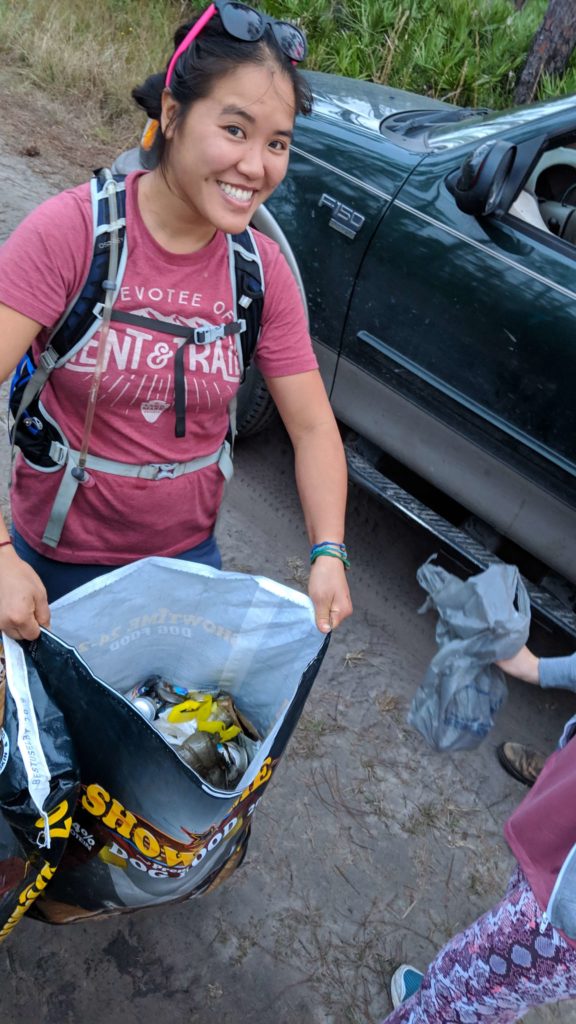
You can even pack out other peoples trash like my friend here!
It is important to plan because if you just go to a trail without any information, you could get lost. There could be a flash flood you would have been warned about if you called or checked the weather. You may end up somewhere with a fire ban, in which case if you build a fire, you will be breaking the law and potentially cause a wildfire. The trail might even be harder than you expect, which leads you to finding a campsite in the dark and potentially camping on fragile land or worse, somewhere unsafe.
Some trails will have designated campsites and campgrounds. Others will follow a 200 feet from the trail and 200 feet from water sources rule, but it is still suggested to camp where someone else has before. (You can usually tell by a fire pit. Although, sometimes there’s a fire pit where someone was not supposed to camp, so keep the rules in your mind when deciding where to camp). Speaking of setting up camp, let’s get to principle number two: (Back to Top)
Stay on trails & camp on durable surfaces
There’s a reason there are trails. Sometimes it can be fun to explore off trail, I get it, but the reason that trails were built was to minimize the impact that we create by walking through nature. Trails are often rerouted by land management programs to prevent erosion because what happens when we trample where we aren’t supposed to? Surface vegetation and organisms can get trampled beyond recovery and change the ecosystem. It’s better to just have one trail and route that has been trampled (because obviously, we are going to go hiking!) than have a bunch of poorly planned trails.
I know it’s tempting to take that “short cut” when you see you have a bunch of switchbacks coming up ahead, but that is unnecessary trampling of vegetation and leads to erosion. There are certain circumstances where one has to go off trail such as to find somewhere to pee. In these cases, there are two things to keep in mind when you are traveling off trail:
One is surface durability. This refers to how different types of ground respond differently to foot traffic. Sand, rock, and gravel for example are highly durable and can tolerate a heavy amount of traffic without any damages. Be wary of lichen that grows on rocks though, as this can be a bit more sensitive.
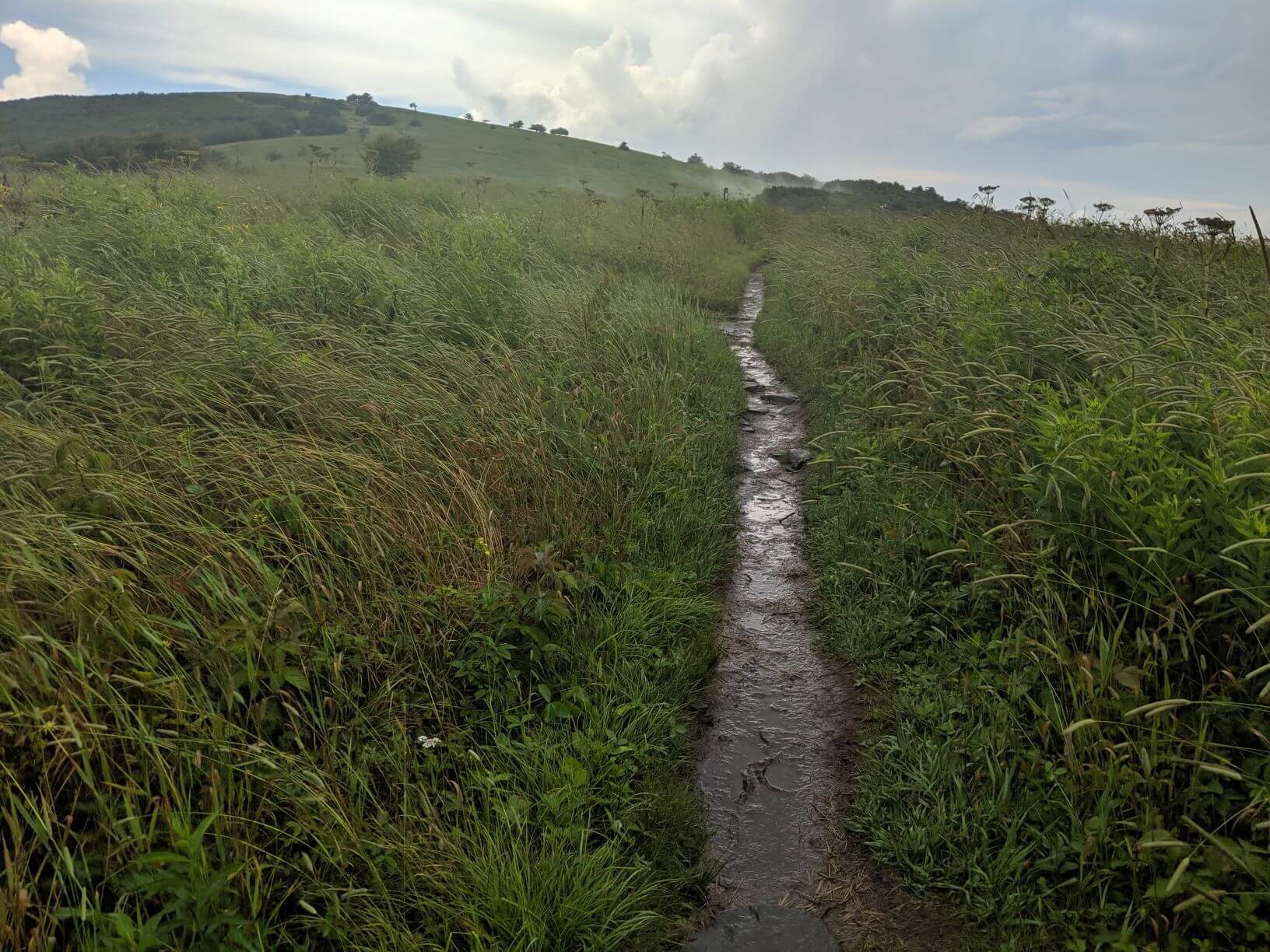
Stay on trails as much as possible, especially in fragile landscapes
Ice and snow is also quite durable, as long as it is thick enough to where walking on it is not also trampling the vegetation below. Vegetation is much more sensitive to travel, especially if it is wet meadows. Spread out so that your group does not trample enough to create another path that encourages others to follow. Dry grasses may be okay, but sensitive areas will show where you’ve walked. You especially want to be careful of this on steep hills because the effect here is even greater.
Living soil is something you will more likely find in the desert and is made up of tiny organisms that help retain moisture and protect from erosion. One step can disrupt or destroy this so it’s very important to stay on trails in these environments, or if completely unavoidable- at least follow the footsteps of someone else.
Desert puddles and mud holes are another place you should completely avoid. These are sometimes home to living creatures and water is obviously a very scarce resource in the desert.
When it comes to camping, choosing the best place to set up a campsite is crucial. Some things to consider when choosing a campsite are:
- The local vegetation and it’s fragility
- The local rules- contact a ranger to find out where you can camp
- Your group size and potential to cause an impact
- Wildlife
- Nearby trails and rivers- stay 200 feet away
It’s important to allow enough time at the end of your hiking trip to find a good campsite. When you are walking in at night and are just ready to collapse, it can be harder to make a good decision about where to set up camp. You may end up creating another campsite and be only a few hundred feet from one that was already created, meaning this could have been avoided.

Better yet… Camp in a fire tower, WHEN PERMITTED, like we did at Park Butte in Washington
A rule of thumb is to camp 200 feet away from any trail or river. When you’re camping in a highly trafficked area, try to stay in sites that already exist. They are usually quite obvious. The brush is cleared, it’s rather flat, and someone may have left a makeshift campfire ring with rocks. Be sure to make sure it still follows the 200 foot rule, as some people create campsites wherever they please.
Camping on rock or sand is also another great option because these are highly durable surfaces.
When you camp somewhere that’s in a more sensitive landscape, there are other things you need to consider. First of all, if you are not educated and experienced at practicing leave no trace, don’t go to these places at all. They have a fragile ecosystem that you can easily destroy by walking over it. When in areas like this, similarly to hiking off trail, spread out. Don’t stay in the same place every night. Try to minimize walks to your water source by filling up as much as possible in one trip. Potentially carry a large gravity filter that will provide enough water for the whole group and send just one person to retrieve the water.
Wear your camp booties here! Who doesn’t love a good soft comfortable shoe to change into at camp anyways? They’re especially important in fragile landscapes because they can help reduce the impact of your campsite. Try to keep your kitchen are on something like a rock or a more durable surface if you can find it. And of course, as always, avoid trampling on vegetation and in puddles. Avoid building a fire and only use your gas stove for cooking. Check with the local ranger to discuss fire rules.

a contained, supervised fire with local wood is the best fire
When you leave camp in the morning, try to make it look like you were never there. Cover your camp area with local ground cover like pinestraw or rake the grass to fluff it back up and cover footprints. Pretend you’re in trouble and don’t want to get caught! 😉 Cover any sign that you were there. Leave no Trace.
The most important rule of thumb here is, if you’re not 110% sure, call the local ranger before your trip. They have all the information you need to help you find the best camping option. Some places only allow camping with a permit. Some places have designated site already made for you. These are great because they’re already cleared and nice and flat so you can avoid damaging your tent with sticks and things that poke on the ground. (To avoid further damage to your tent, invest in a footprint. To find out what a footprint is, read my blog post about backpacking gear.) (Back to Top)
Disposing of trash, toilet paper, and POOP!
I don’t know if you’ve ever stepped in a giant pile of dog shit before, but there’s pretty much nothing worse (maybe a skunk!). You get to smell like it all the way until you can clean your shoe perfectly. What if that was HUMAN POOP?
Yeah, I just gave you a mental image you never wanted to have. And that’s why it’s important to learn how to properly use the bathroom in nature. Why? Because there’s not always a bathroom or privy out there when you gotta go! If you just absolutely can’t stand the idea of not having an actual toilet or at least a porter potty, stay off trails that don’t have this (there’s a lot of them!). You can ask a ranger about bathrooms before your trip.
Now, moving on. When you gotta take a dump on the trail, what do you do? Well, it depends on the area you are in. This is another great question to ask the ranger when you’re planning for your trip. I will start with the most commonly known information and then surprise you with some nasty.

Sometimes you might get lucky and find a throne in the woods. Other times…
It’s most commonly understood that you need to properly bury your feces (I hate that word, I’m using poop!). Burying your poop prevents other people from stepping on it (THANK YOU!), prevents the spread of disease, and keeps poop out of rivers! (a.k.a. Don’t bury your shit close to a river!)
To properly bury your waste, you need to stay at least 200 feet away from any water sources and ideally the same distance from any trail. You want to find a good place for digging a hole such as near downed trees, thick growth, or gentle hillsides. Avoid anywhere where water might collect and flow during rain.
You want your cat hole to be 6-8 inches deep, which is why I always recommend carrying a trowel in your bathroom kit. Part of being prepared for a hike is packing the right things for your trip. In a bathroom kit, you need waste bags, a trowel, toilet paper, and hand sanitizer. If you want to know what else you need to bring to be prepared, check out my day hike post or my backpacking post.
Once you have dug your hole and finished, it is important to fill the hole back up with organic matter. Bonus points if you take a stick and chop and stir it up a bit. This helps break things up and make it more easily compost-able. Cover your shit well! Because I am so conscious of other people, I usually leave a stick or two upright in it to warn people so that someone doesn’t accidentally dig in the same place.
Sun and heat also help the decomposing process so if you can find an area that receives sun, great! South facing slopes usually receive the most sun if you are on a hill top.
When camping in a group, make sure to spread your cat holes out. Don’t dig one giant one for the whole group. There are rare situations where this might be an option and it’s called a latrine, but discuss it with your local park ranger. Mostly, cat holes is the way to go.
But what do we do with the toilet paper??
Not what this person did in this video!
I’m glad you asked. You may not be ready for this, but the best way to manage toilet paper is to PACK IT OUT. There’s a giant misconception that we should bury the toilet paper, but I don’t know if you’ve seen that some toilet paper does not decompose as fast as we think it does, especially if you use “flush-able” wipes. NO. This is especially important in arid land like deserts and more fragile landscapes.
It is possible to bury toilet paper in your cat hole, but you need to make sure it is plain, white, and unscented. Do not bury flush-able wipes EVER. And in some areas, it’s not good to bury. Instead of asking every time before a trip, I just have made it a habit to have a separate trash bag (AND ZIPLOC FOR ODOR PROOFING!) for my toilet paper.
I also use a pee rag to minimize the amount of toilet paper I use. Don’t use this for poop. I mean, duh. Gross. A pee rag is just a bandanna or awesome antimicrobial cloth you carry to wipe pee with and it’s not as gross as you think. I will discuss in more detail in an upcoming blog post.
You can even opt to choose natural toilet paper like rocks, leaves and snow. If done properly, these do not cause your body any harm. I personally don’t do this because I’m too afraid of picking a leaf or using something that will cause an itch! But I do pack out my paper.
What about lady problems? Yeah, don’t bury your tampons. You need to put in ziplocs and carry it out. What to do when you’re on your period hiking? I will educate you in an upcoming blog post.
The good news is, you don’t need a hole for pee! Be free, my friends. Pee has minimal impact, although it can attract wildlife (which is why you need to pee away from camp!) You can minimize the impact further by pouring some water over it.
Ready for the nasty part? In some places, it is required to pack out your poo. That’s right. There are sanitary waste bags (kind of like picking up after your dog) for packing up and carrying out your own shit. And according to Leave No Trace, it’s likely to become more and more common as areas become more popular. We had to do this on one of the trails that we did in Washington. Honestly, it’s easier than digging a hole, just a whole lot of mental block to get past.
What about non-bathroom-related waste?
Pack. It. Out. I don’t know if you’ve ever been to a beautiful piece of nature only to find it littered with wrappers and beer cans? Yeah, nobody likes that. If you can carry a full bag of food or can of beer into the trail, you can most definitely carry out the trash when it’s lighter. Get in the habit of always bringing trash bags on your hike. Even if you don’t create your own trash, you could use that bag to pick up some trash you find! Always leave it better than you found it.
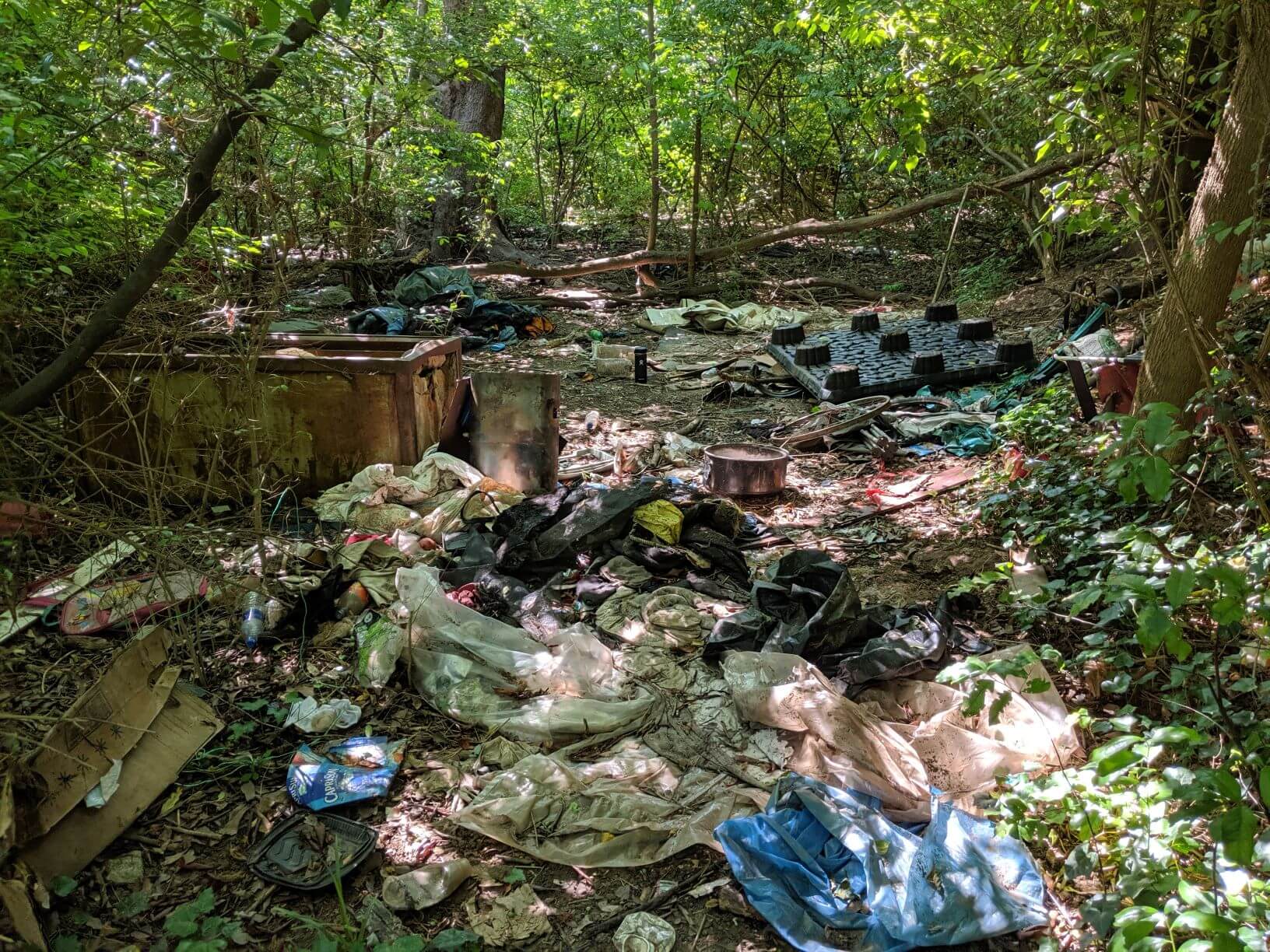
BEFORE picture of a trashed area I volunteered with REI to clean up

AFTER! Leave it better than you found it 😀
I like to use an odor proof bag on my trips. One for deterring wildlife and two so I don’t have to smell like trash! These are also helpful in case there’s any leaks, but hopefully you’re eating up all your food and not throwing anything away that leaks! If you made bacon, this includes bacon grease. You cannot rely on burning it out with a fire because the remnants still attract wildlife.
This is how areas with aggressive bear population appear. By not disposing properly of kitchen waste, bears come and find out they can get free food here. Raccoons and other animals get used to people and can become a real problem. I remember on a camping trip on an island off the coast of Miami, the Raccoons were brave! We would shoo them away only to turn our backs and have them right back again. They were not afraid to attack you as I got too close to one and nearly had it turn on me.

This is why it’s important to pack out ALL of your trash, including the easily-overlooked-because-it’s-biodegradable apple cores and orange peels and pistachio shells. ALL food needs to be packed out. ALL trash needs to be packed out. Plastic bags and wrappers and fishing line can have a very harmful effect on the environment and animals. (We’ve all seen those super sad ocean pics, right?)
There are a couple more waste items we need to address as well that you may not even think about: dishwater and soaps/lotions.
I’m still learning about dishwater. It’s not something you think about when you just want to wash your dish and relax. But dishwater contains remnants of food so this is important like packing out food scraps. If you have scraps leftover, make sure to trash them and pack them out. When washing dishes, use a clean dish to carry water 200 feet from a water sources. Boil some water if you need hot water.
It’s best to just use water and elbow grease. If you must use a soap, be sure to use a natural soap such as Dr. Bronner’s that will not harm the environment. When clean, scatter your dishwasher. Soap, lotion, sunscreen, and repellent can impact these vital water sources. Wash away from the water source as much as possible and scatter your dirty water broadly. (Back to Top)
Leave it
I feel like I’m talking to a dog here. LEAVE IT! LEEAVEE ITTTTT. ::Laughs:: I know it’s fun to take home little sentiments, but the best way to leave no trace is to leave it where it belongs. Rocks, shells, wood, leaves, flowers… These have an impact you may not be aware of!
For example, leaves are a great source of Vitamin C for deer mamas. Don’t take their food. Taking things home is similar to trampling vegetation and campsites. You want to leave it how you found it, unless you find something man-made that shouldn’t be there.
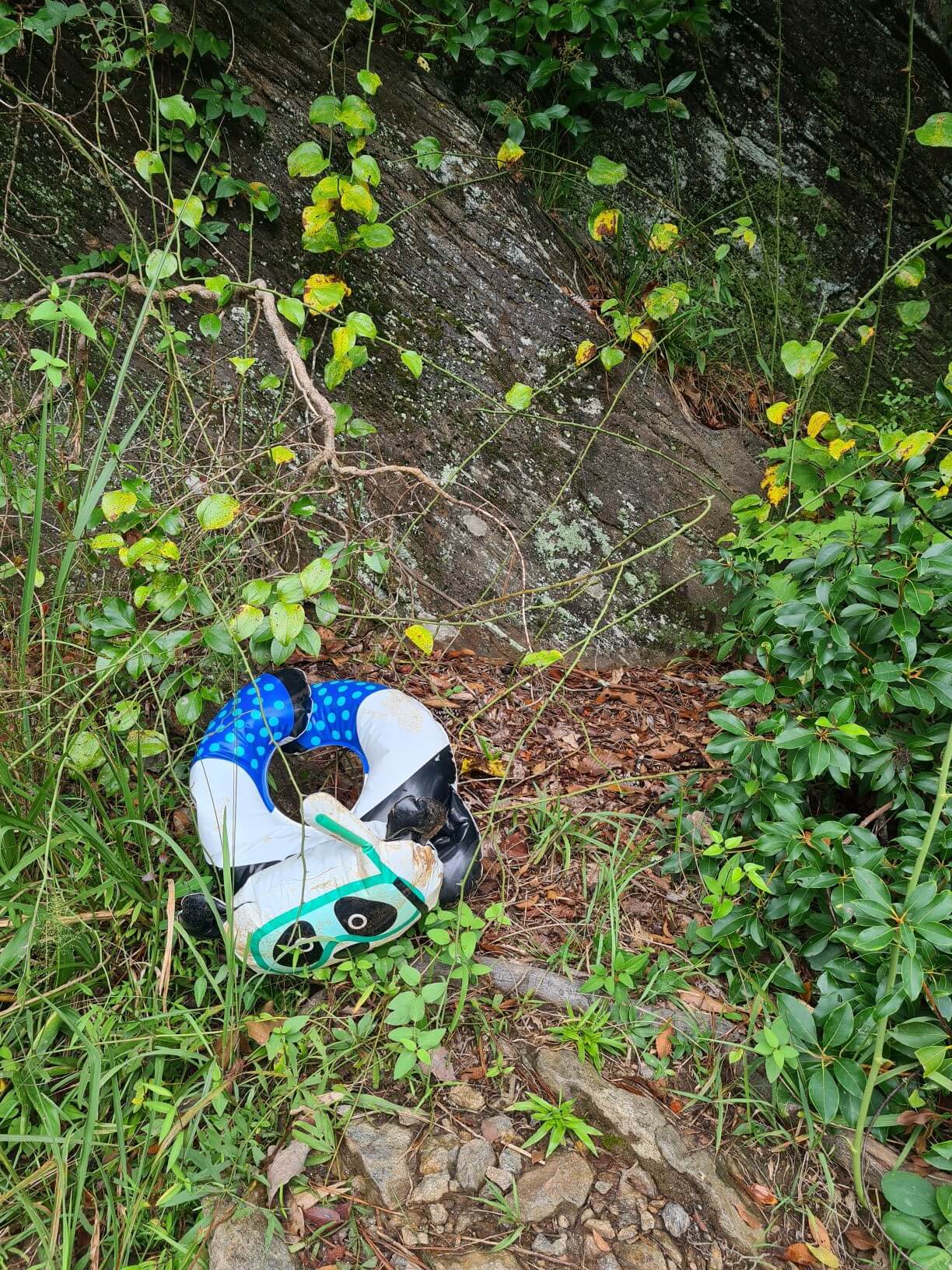
One of these things is not like the other… Don’t leave things like this!
If someone built a proper fire ring with rocks, leave it because dispersing the rocks will cause further impact, as someone behind you may come and rebuild a pit with different rocks. You can dismantle it if there are multiple fire rings in the same area, as you only need one per site, but otherwise leave it.
You also want to leave trees how you found them. Don’t be carving your initials in a tree! What are you even doing? They don’t need a nail in them either for hanging your lanterns. There’s branches for that! And I know you want to take home some flowers, but if everyone took home “some flowers,” there would be no flowers left. Remember that wildlife depends on things like this and we are not the only creatures on the planet. Disturbing their environment ultimately creates a chain reaction that will disturb our environment as well. (Back to Top)
Make an awesome campfire
How do you make an awesome campfire? Opt out of having one. Okay okay, I know we all love a good campfire and there’s a time and a place for it, but you don’t need one on every single trip. A lot of the time people make campfires just to cook their food, but now there are lightweight camp stoves which function in any weather conditions and cook your food more evenly anyways.
The overuse of campfires has degraded the natural appearance of multiple areas. They can also lead to wildfires if you don’t know how to properly build and maintain a fire. The gas stoves are a great option because you can cook over them and use them in any environment.
If you do have a campfire, make sure to check with the ranger first to see if there are any fire restrictions in the area. You don’t want to have a fire in areas that are fragile or in areas without a lot of wood. If you have a fire, you basically want it to look like you were never there. Things to keep in mind when building a fire:
- Use existing fire rings if they are there
- Use LOCAL wood, don’t bring wood from home!
- Don’t chop up standing or fallen trees, find dead wood on the ground no bigger than the size of your wrist that can be broken with your hands
- Find wood away from camp and re-disperse any wood you don’t use
- Never burn plastic or foil lined wrappers
- Burn the fire to white ash and put out with water
- Never leave a fire unattended
- Keep fire away from children, pets, flammable items and fuel (Back to Top)
Be nice to the animals
This does not mean go give them a hug. I KNOW. It’s the most disappointing thing ever. Any time I see an animal, I just want to be its friend. Well, it doesn’t want to be mine (or yours). 
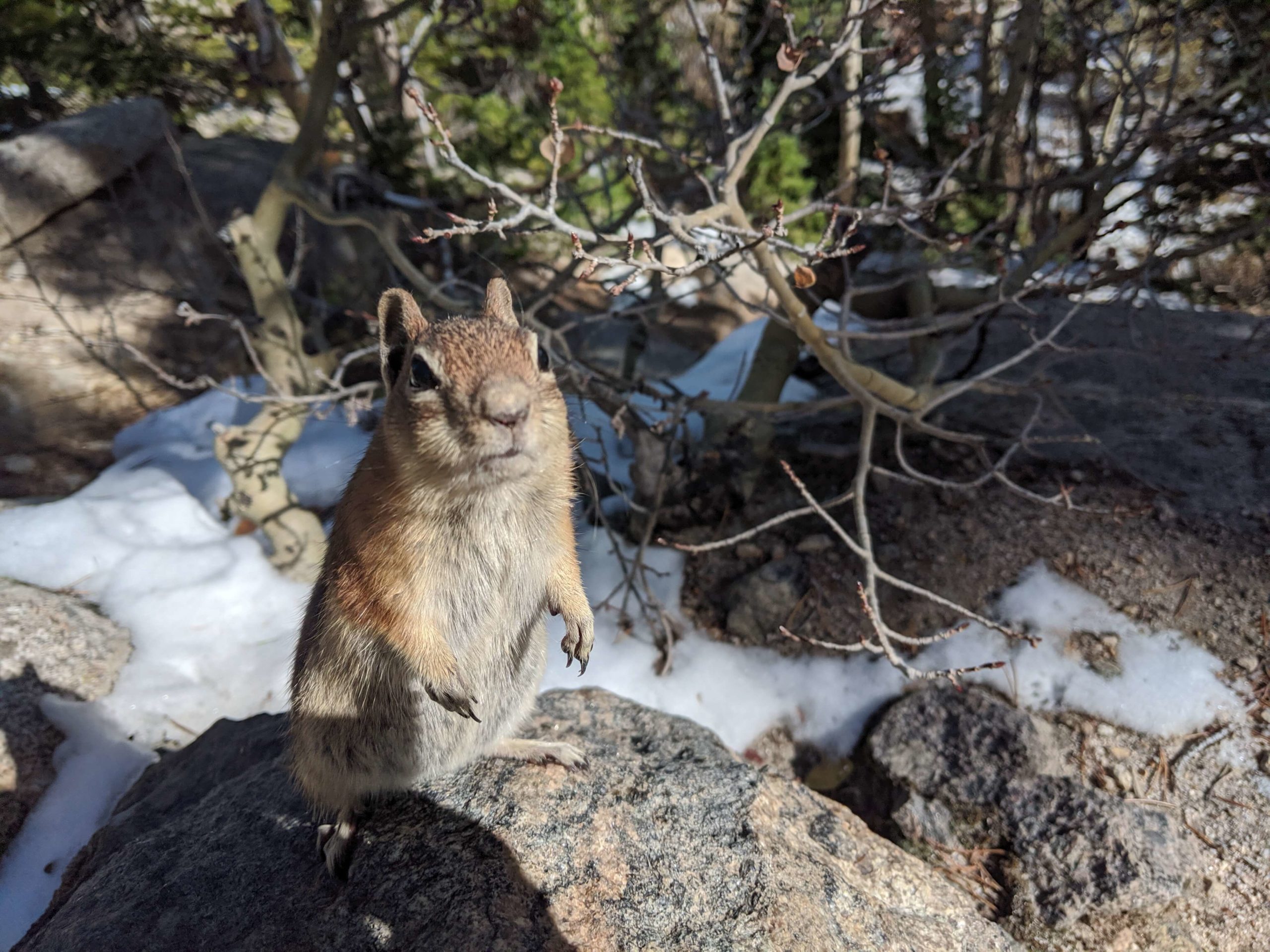
An example of an animal from my trip to Estes Park who was NOT practicing social distancing; Please do not feed them!!!)
Like a person who is afraid of intimacy, give them space. Approaching them will scare them. Don’t make a lot of noise or fast movements either because this can cause them stress, which can actually affect the animal’s ability to withstand extreme climate conditions such as hot and cold. With the exception of making lots of noise and making yourself big to scare off a bear or a wild cat that may be threatening you, try to be quiet and peaceful. Let them live their best life.
Following all the steps before this one minimize the effect on animals as well. Camping far enough away from water gives them space to go get what they need. Not having a fire prevents forest fires and deforestation (which is their home!). Leaving things where you found them provides food and materials for shelter for the animals. Being careful to dispose of waste prevents the area from being polluted and harmful to animals. Swimming in lakes and rivers is usually okay, but in desert oasis, you may be polluting an animals only survival source.
Remember, they’re sharing their home with you 😀 (Back to Top)
Share the space with others
Speaking of sharing, we also have to be mindful of other people who also want their nature fix. Everyone enjoys nature in different ways. Some people love quiet and solitude. Others love to have music and take photos. You must simply be aware that someone else may be wanting a different experience than yours. Consider headphones if you like music, but don’t listen so loud that you can’t hear someone needing to pass you on the trail.
When passing on the trail, the general rule of thumb is mountain bikes and hikers yield to horseback riders. And mountain bikes also yield to hikers. If the trail is narrow and you’re hiking opposite directions, those going downhill step aside for those going up. I often find the opposite in terms of hikers because a lot of the people going up want a break! Just be mindful and make sure there’s room for you both.

My friend doesn’t let me pass. Don’t be like my friend.
Take breaks off the trail on durable surfaces. Pick up after your pet. Don’t let your pet run loose. Common sense.
I was sad to read that they even discouraged brightly colored clothes and tents and feel like that’s a little extreme and personal choice. I support Leave No Trace for the most part, but when I read things like that it seems a little crazy. Bright colors are good in hunting season. I was baffled to read this bit about not wearing bright colors. They say its to avoid the appearance of a space being crowded, but my bright colors never hurt anyone and I don’t plan to give those up for earth tones. Sorry, earth-tone lovers. Nature has bright colors too! (Back to Top)
Summary of Leave No Trace
To summarize, for the most part you need to be mindful of the space you’re in, keep it clean and as you found it, and be nice to other people and animals. Always check with a local ranger before a hike, especially if it involves camping overnight. You can get all of the info from them if you properly plan and ask questions. Things I always ask a ranger before my overnight hikes:
- Can we have a fire?
- What will the weather be like?
- How is the bear life? Do we need a bear canister or just a bag?
- What are the water sources like?
- Where can we camp?
Asking these questions will keep you the most prepared. I hope my paraphrased version helps you understand the principles of Leave No Trace further. Like I mentioned, improper planning can leave you in dangerous situations such as my first backpacking trip to Acatenango in Guatemala. To prepare and pack correctly for a trip, check out my backpacking post or day hike post. Good luck! (Back to Top)
Additional Resources
For additional resources on how to take care of the natures, please check out:
- Keep Nature Wild: A clothing brand and volunteer community dedicated to picking up trash outside. Every purchase you make equals one pound of trash picked up. You can also volunteer with them for discounts on their products
- REI: Rei is one of my favorite companies, their policies are amazing. I’m a customer for life. They even host trail clean ups like the one you may have watched at the beginning of this post
- My YouTube channel: I challenged myself to living as plastic-free as possible for 30 days and documented my experience (I also post about hikes and travel tips on this channel!) (Back to Top)
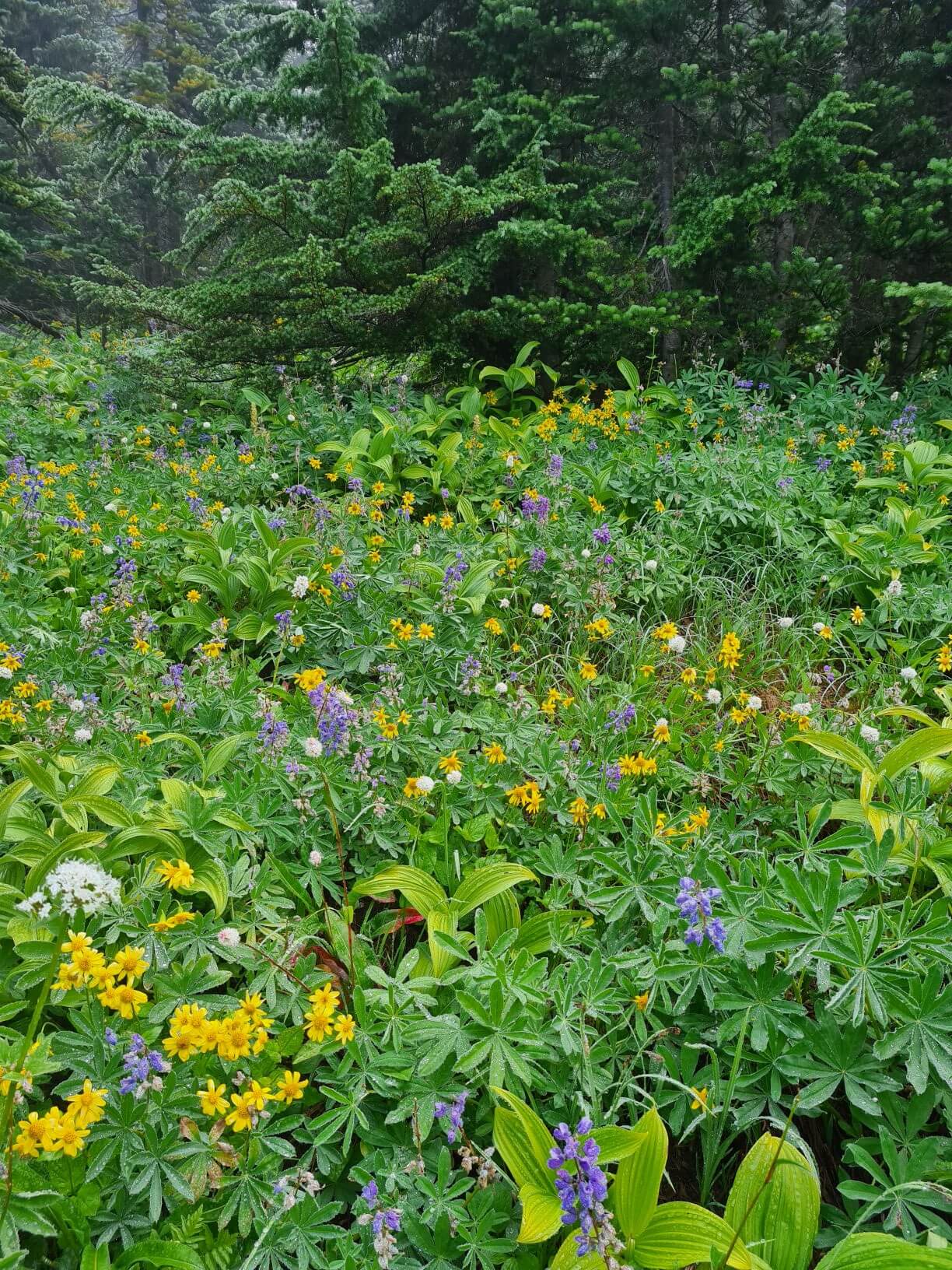


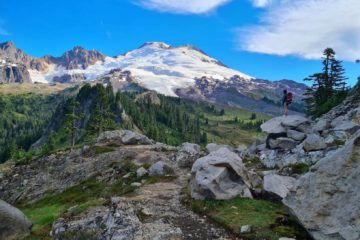
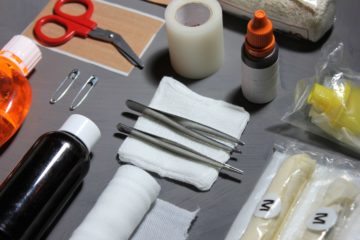
0 Comments